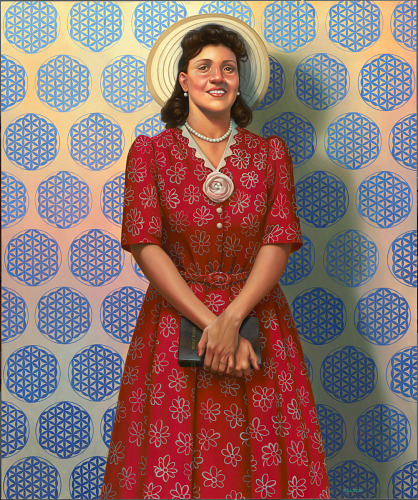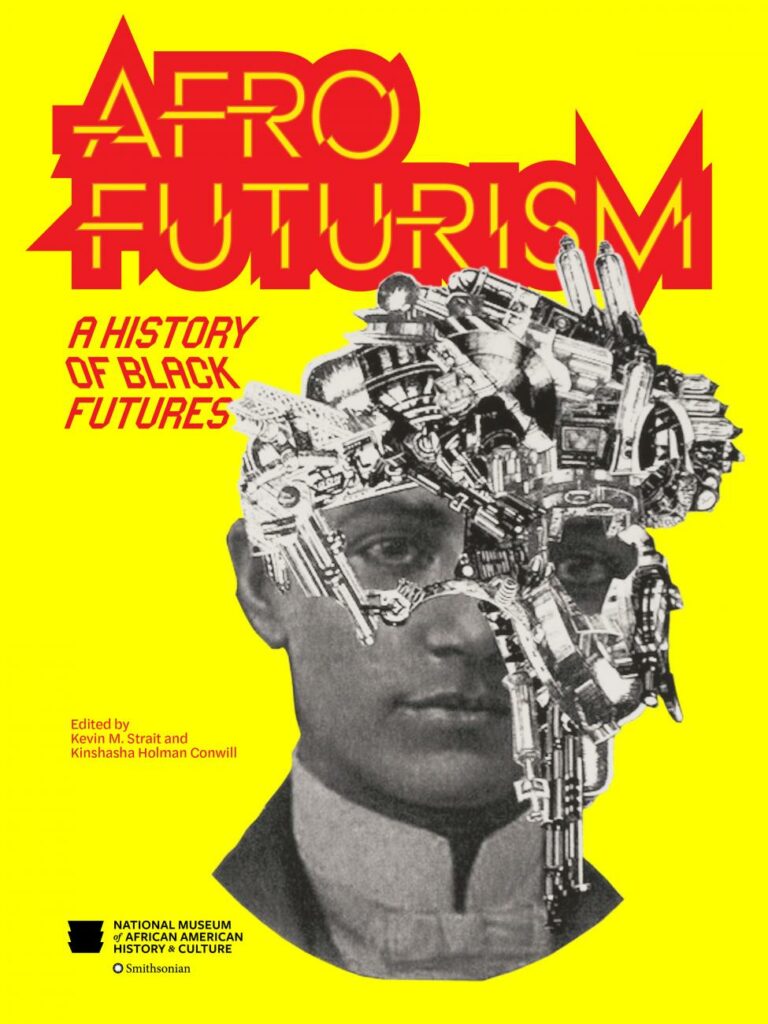
Afrofuturism? What's that?
In August 2024, my wife, daughter, and I visited the National Museum of African History & Culture in Washington, DC. My wife and I have never been to the museum, although I was a charter member for several years before its 2016 opening. Conversely, my daughter had gone twice, once for school and once with a church group.
The primary newish exhibition was about Afrofuturism, a term I'd never heard of before planning the trip. We went to it first. The exhibit ended two weeks after we visited, so we were lucky. (It ran from March 24, 2023, to August 18, 2024.)
However, after seeing the exhibit, I still had difficulty explaining to somebody else what Afrofuturism is. I did have a good sense of WHY there was Afrofuturism, and it was because we're still here.
Booklet, P8 t
What does Wikipedia say? "Afrofuturism is a cultural aesthetic, philosophy of science, and history that explores the intersection of the African diaspora culture with science and technology. It addresses themes and concerns of the African diaspora through technoculture and speculative fiction, encompassing a range of media and artists with a shared interest in envisioning black futures that stem from Afro-diasporic experiences. While Afrofuturism is most commonly associated with science fiction, it can also encompass other speculative genres such as fantasy, alternate history, and magic realism, and it can also be found in music."
So, I decided to buy Afrofuturism: A History of Black Futures in the museum shop to augment my understanding. While there are four main chapters, several essays written by different authors are included within.
Chapter 1 is Space Is The Place. One of the first images in the museum display and also in the introduction of the book is the final panel of https://interminablerambling.com/2018/08/02/10093/Judgment Day, a 1953 Al Feldstein/Joe Orlando story from EC Comics' Weird Fantasy #18, [where Tarlton is a representative from “Earth Colonization.” He visits Cybrinia, “the planet of mechanical life,” to see if the blue and orange robots are ready for “inclusion in Earth’s great galactic republic.”
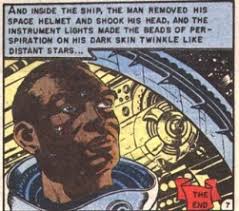 After the tour, Tarlton begins to leave, and he tells his guide, “Cybrinia is not ready to join the great galactic republic.” The guide then asks, “Is there any hope, Tarlton? For us?” Tarlton informs his orange guide that there is hope because the citizens of earth went through the same thing. As he boards his ship, he tells his guide, My friend, for a while, on Earth, it looked like there was no hope! But when mankind on Earth learned to live together, real progress first began. The universe was suddenly ours.”He then takes off his helmet]
After the tour, Tarlton begins to leave, and he tells his guide, “Cybrinia is not ready to join the great galactic republic.” The guide then asks, “Is there any hope, Tarlton? For us?” Tarlton informs his orange guide that there is hope because the citizens of earth went through the same thing. As he boards his ship, he tells his guide, My friend, for a while, on Earth, it looked like there was no hope! But when mankind on Earth learned to live together, real progress first began. The universe was suddenly ours.”He then takes off his helmet]
An important character is Lieutenant Nayato Uhuru from Star Trek. She was played by Nichelle Nichols, who also came up with her character's Swahili name. Famously, she wanted to quit after the first season, but she was convinced to stay on by MLK, Jr. She subsequently formed the "company Women in Motion, which NASA contracted to help recruit more than 8000 people, including some of the first African American Asian Latino and female astronauts." Many women, starting with Mae Jemison, credit Nichelle's efforts for entering the space program.
[Air Force captain Edward J Dwight junior completed training at the aerospace research pilot school despite positive coverage from the press and those training qualified and for selection NASA did not put him forward for consideration would be more than two decades before NASA sent an African American to space in 1978 Air Force Colonel guy bluford junior was selected as a member of NASA's 8th astronaut class on August 30th 1983 space shuttle challenger flew bluford and four others to space bluford would go on to spend almost 29 days in four total spacecrafts beyond the Earth's atmosphere]
[Subsequently, other stories, such as the Hidden Figures book and movie, which told the story of mathematicians Katherine Johnson, Dorothy Vaughan, and Mary Jackson (Janelle Monáe), who worked at NASA during the Space Race inspired others]
Chapter 2 is Speculative Worlds. Interestingly, the notion goes back at least to Phillis Wheatley (1753-1784)
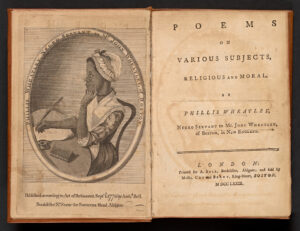
{born in West Africa sold into slavery as a child needed to travel to London with her master's son in order to publish her poems because she couldn't in the United states}
Her Poems of Various Subjects Religious and Moral were released two years before her emancipation in 1773, the first book published by an African American poet
{many praised it, including George Washington, but others doubted her ability and even organized a tribunal to contest her authorship.
Thomas Jefferson and others underestimated her fervent imagination, capable of composing such lines as
celestial Salem blooms and endless spring
calm and serene thy moments glide along
and may the muse inspire each future
Martin R Delaney (1812-1885), a writer, "soldier abolitionist, publisher position, and advocate for black resettlement in Africa," originally published Blake or the Huts of America as a serial in the Anglo African magazine from 1859 to 1862; the book tells the story of Henry Blake, who escaped slavery in the South, flees to Canada, then travels to Africa and Cuba. In action, Blake resembles both Denmark Vesey and Josiah Henson, two historic figures well known for efforts to achieve freedom for themselves and others.
William Edward Burghardt DuBois was a towering figure. He was asked to curate the American Negro exhibit at the 1900 Paris Exposition. "DuBois developed colorful hand-drawn charts, graphs, and maps that illustrated the social realities of African Americans. These infographics were surrounded by documentary photographs, books, and patents attributed to African Americans. By visually demonstrating the accomplishments of the post-emancipation generation, Dubois [claimed] that African Americans' achievements deserve to be seen in the same light as other vaunted achievements of the 19th century."
[88-90]
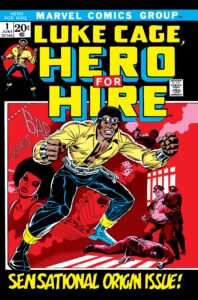 When I was in college, my best friend Mark used to drive us to a store so he could pick up comic books, which I thought was a very strange thing for an adult to do. But one day in 1972, I discovered this issue of Luke Cage, Hero for Hire #1, which I purchased, which started two decades of funny book collecting.
When I was in college, my best friend Mark used to drive us to a store so he could pick up comic books, which I thought was a very strange thing for an adult to do. But one day in 1972, I discovered this issue of Luke Cage, Hero for Hire #1, which I purchased, which started two decades of funny book collecting.
76. 77 -Luke Cage Powerman
One of the early video clips at the museum suggested that the speaker said he didn't know that he needed to see the movie The Black Panther and that he needed it to exist until he saw it. I understood that because I had the same experience.
In a caption: for Black Panther (2018), production designer Hannah Beachler constructed the aesthetics of Wakanda, the technologically advanced African nation where the movie takes place. Beachler traveled throughout Africa for eight months, researching the continent's culture, architecture, clothing, food, and transportation. She became the first African American nominated for the Academy Award for Best Production Design and the first to win.
"The fictional African nation of Wakanda [is] powered by the imaginary element vibranium, concealed from the outside world and never conquered." For a continent that had long been colonized, this was massive.
There is also a section, Dialogues in Space: Octavia Butler and Samuel Delany.
Chapter 3 is Visualizing Afrofuturism. The book cover is Android/Negroid #14 by Wayne Hodge 2015 the series combines collage and photography by merging photographic portraits with illustrations of machinery and technology Hodge explores the relationships between race history and science fiction
There are black people in the Future is a series of billboards starting in Pittsburgh and spreading throughout the world.
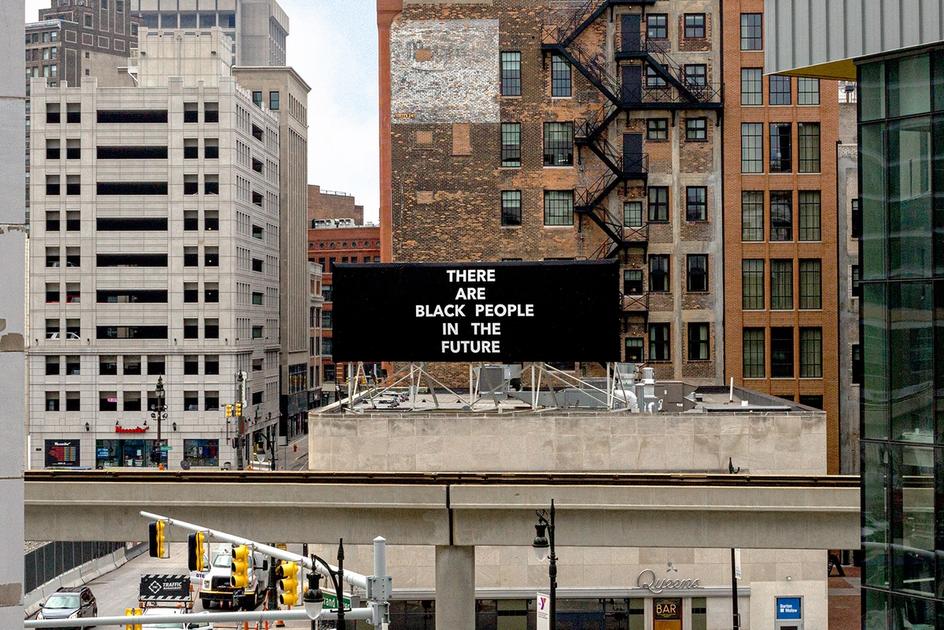
123
The chapter focuses on fashion and art, such as Commemorative Headdress of Her Journey Beyond Heaven by Kenya, which uses "mass produced items to draw attention to material consumption beauty standards and black cultural identity. "
125

Caption 144
Chapter 4 is Musical Futures, which namechecks Jimi Hendrix, Nona Hendrix of LaBelle, Vernon Reid of Living Colour, and especially Sun Ra. Writer Stanley Nelson says without Sun Ra, it is hard to understand George Clinton, Erykah Badu, Janelle Monáe, Raz G, Kamasi Washington, Shabaka Hutchings, Black Panther, Lovecraft country, and Afrofuturism itself.
[178-180
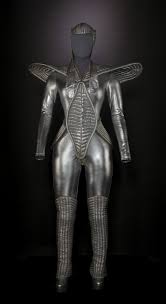
The book helped me better understand Afrofuturism. There was a certain repetition, inevitable, with a half-dozen writers covering similar territory. Nevertheless, I recommend it; the visuals in this book are tremendous.
Finally, not in the book, but what was in the exhibition was this picture of Henrietta Lacks. ."She died in 1951, aged 31, of an aggressive cervical cancer. Months earlier, doctors at the Johns Hopkins Hospital in Baltimore, Maryland, had taken samples of her cancerous cells while diagnosing and treating the disease. They gave some of that tissue to a researcher without Lacks’s knowledge or consent. In the laboratory, her cells turned out to have an extraordinary capacity to survive and reproduce; they were, in essence, immortal. The researcher shared them widely with other scientists, and they became a workhorse of biological research. Today, work done with HeLa cells underpins much of modern medicine"
I wondered how someone whose cells had been exploited for so long would be Afrofuturism. Ultimately, her immortality, a scientific miracle, was also ultimately successful in achieving the future for her family as when they settled the outcome of the case.
